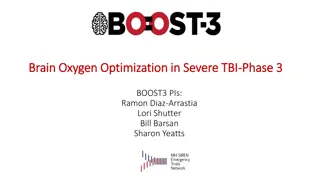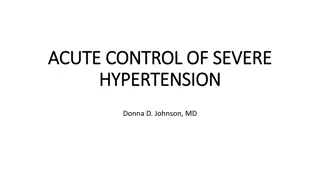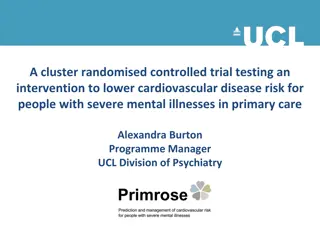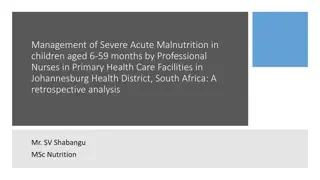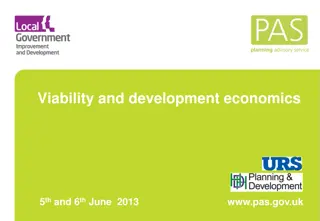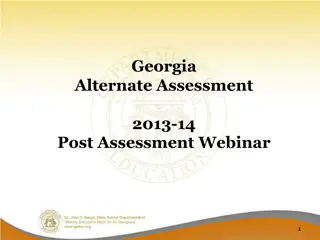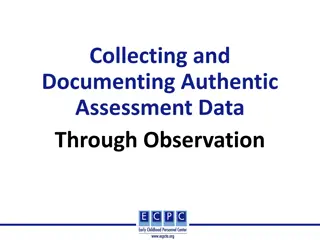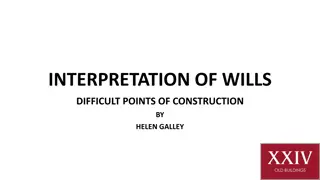Interpreting the Use of 'Severe' in NPPF Impact Assessment
Understanding the term 'severe' in the National Planning Policy Framework (NPPF) for impact severity and its implications within the industry. The NPPF guidelines emphasize the importance of addressing significant impacts on the transport network and distinguishing between severe and significant impacts. The public's perception of severe impacts often revolves around issues like pedestrian safety, traffic congestion, and commuting delays.
Download Presentation

Please find below an Image/Link to download the presentation.
The content on the website is provided AS IS for your information and personal use only. It may not be sold, licensed, or shared on other websites without obtaining consent from the author. Download presentation by click this link. If you encounter any issues during the download, it is possible that the publisher has removed the file from their server.
E N D
Presentation Transcript
A discussion upon the NPPFs use of Severe as a term of impact severity and how this is being interpreted within the industry. By Stefanie Rachmann-Davies
National Planning Policy Framework Department for Communities and Local Government March 2012 The NPPF sets out the Government s planning policies for England and how these are expected to be applied. Replaced PPG13: Transport and other PPGs
NPPF para 32: Significant amounts of movement Para 32: All developments that generate significant amounts of movement should be supported by a Transport Statement or Transport Assessment
NPPF para 32: Severe Improvements can be undertaken within the transport network that cost effectively limit the significant impacts of the development. Development should only be prevented or refused on transport grounds where the residual cumulative impacts of development are severe. Cost effective Significant impacts Severe impacts
What is a severe impact? Oxford Dictionary: Very great; intense Strict; harsh Plain in style or appearance Cambridge Dictionary Causing very great pain, difficulty, worry, damage, etc; very serious Extreme or very difficult Not kind or showing sympathy; not willing to accept other people s mistakes or failures Completely plain and without decoration
What is a severe impact The public s view Concerns over pedestrians and in particular children Unnecessary use of traffic lights, in particular during evenings School travel, developments to include crossings, footways, cyclepaths, etc Who gets priority residents or business parks Delay of 5 minutes to cause re-routing Wait of more than two cycles at traffic lights to cause re- routing Doubling of traffic on lightly trafficked roads no problems for car drivers but might be for pedestrians Wait of more than one minute to cross road too much for pedestrians
So who determines what is an acceptable impact and what is a severe impact? A very helpful letter from Department for Communities and Local Government to Kent County Council: The outcome of a Transport Assessment or Statement will of course vary from each development and different mitigation measures may be appropriate in different situations. We believe that local authorities are best placed to determine what impacts there are and whether they consider this to be an unacceptable or severe impact on their local area, after considering what mitigation measures are appropriate in each circumstance.
WSCC Guidance Pre-dates NPPF Material impact is defined by WSCC as an increase in congestion at any junction within the study area agreed at scoping stage after the effects of the travel plan, sustainable infrastructure/services and highway mitigation measures have been taken into account. Any queue lengths long enough to block another junction or traffic stream will constitute a material impact. Where existing peak queues already have this effect, nil-detriment or better must be achieved. Impact on delay at junction is dependent on road hierarchy and existing level of congestion Is it contrary to NPPF?
Examples of appeal decisions Woodgate Centre, West Sussex, 2012 100 dwellings served off a simple priority junction onto A29 Site identified in SHLAA Nearby level crossing causes long delays at times Level of accessibility similar to another site which was allowed at appeal Unilateral Undertaking entered into which would provide some funding for pedestrian and cycle improvements but a shortfall in funding would remain Impact: 7% increase in daily vehicle movements on A29, resulting in additional queues of about 7 vehicles or 40m Safety of site access questioned despite improvements Additional queues in combination with site access concerns and level crossing led to dismissal of the appeal
Examples of appeal decisions Land at Whittingham Road, Longridge, Preston, 2012 Mixed use residential development also including B1 offices, C2 apartments with care, D2 leisure facility / swimming pool Additional 154 and 188 vehicles in AM and PM peak respectively Heavy congestion observed at junction some 7km to the west of the site (Broughton Cross) Queues due to A6 / M55 junction 1km to the south of Broughton Cross Inspector: It is not, as suggested by some, to look merely at the magnitude of the increased traffic generated by the development proposal compared to the existing levels, and to see if the improvements proposed as part of a scheme deliver a nil detriment outcome. It is to assess the final residual implications for the highway and transport network and establish if these would be severely adverse. Inspector found, against the highway authority s position, that the residual cumulative highway problems would be extreme. Appeal dismissed
Examples of appeal decisions Land at South Loansdean, Morpeth, 2012 200 dwellings plus ancillary commercial development Development to add around 7% of housing to local area Site is in greenfield location outside settlement boundary Inspector found the highway impact not to be severe but dismissed the appeal on the basis of severe impact to the countryside
Examples of appeal decisions Manor Park Farm, Moreton Road, Buckinghamshire, 2012 80 dwellings Shortfall of housing supply at district level TA methodology agreed but argument over severity of impact Fewer than 50 vehicles in peak hour generated Impact: Increase in queues of 1.6 vehicles modelled Inspector found this not to be severe and allowed the appeal









